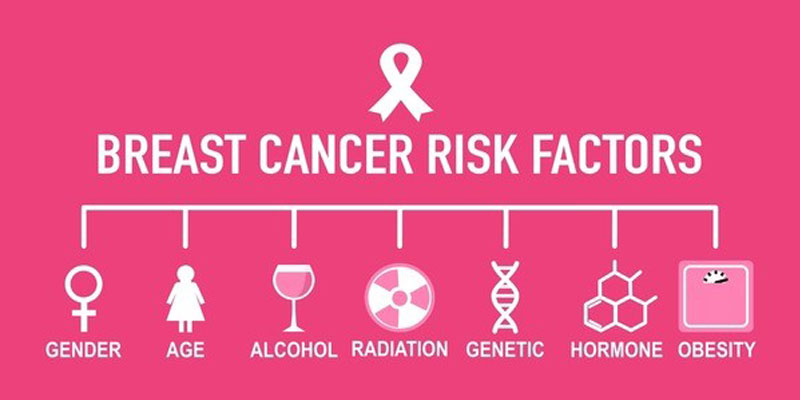Breast cancer is a complex disease influenced by a variety of risk factors. Understanding these factors can empower individuals to make informed decisions about their health and take proactive measures to reduce their risk. While some risk factors cannot be changed, such as age and family history, many lifestyle-related factors can be modified to lower the chance of developing breast cancer.
- Gender
Being female is the most significant risk factor for breast cancer. Although men can also develop breast cancer, the vast majority of cases occur in women. This gender difference is primarily due to hormonal factors.
- Age
The risk of developing breast cancer increases with age. Most cases are diagnosed in women over the age of 50. Regular screenings become increasingly important as women age.
- Family History and Genetics
A family history of breast cancer can significantly increase the risk. Women with close relatives, such as mothers or sisters, who have had breast cancer are more likely to develop the disease themselves. Genetic mutations, particularly in the BRCA1 and BRCA2 genes, are strongly associated with hereditary breast cancer.
- Personal History of Breast Cancer
Women who have had breast cancer in one breast have an increased risk of developing cancer in the other breast or a different part of the same breast. Regular monitoring and follow-up care are essential for these individuals.
- Hormonal Factors
Hormonal factors play a crucial role in breast cancer risk. Women who began menstruating before age 12 or went through menopause after age 55 have a longer exposure to estrogen, which can increase risk. Additionally, taking hormone replacement therapy (HRT) after menopause can raise the risk.
- Lifestyle Factors
Several lifestyle factors can influence breast cancer risk:
– Weight: Being overweight or obese, especially after menopause, increases the risk.
– Physical Activity: Lack of physical activity is associated with a higher risk of breast cancer. Regular exercise helps maintain a healthy weight and hormone levels.
– Alcohol Consumption: Studies indicate that alcohol consumption is linked to an increased risk of breast cancer. Limiting alcohol intake can reduce this risk.
– Smoking: There is evidence to suggest that smoking may increase the risk of breast cancer, particularly in premenopausal women.
- Radiation Exposure
Women who have received radiation therapy to the chest area, especially during adolescence or young adulthood, have a higher risk of developing breast cancer later in life. This is particularly relevant for those treated for conditions such as Hodgkin’s lymphoma.
- Ethnicity
Certain ethnic groups may have varying risks for breast cancer. For example, White women have a higher incidence of breast cancer than women of African American descent, but African American women are more likely to die from the disease. Understanding these differences can help in tailoring prevention and treatment strategies.
Conclusion:
While some risk factors for breast cancer, such as age and genetics, cannot be changed, awareness of the modifiable factors can empower individuals to take action. By maintaining a healthy lifestyle, undergoing regular screenings, and staying informed about personal risk factors, women and men can significantly reduce their chances of developing breast cancer. Early detection and prevention strategies can save lives, making awareness of these risk factors crucial.

